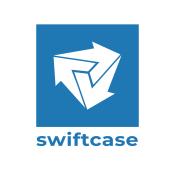Managing risk should be a priority for any company, regardless of size
or industry sector. Most business owners and managers are aware of some
of the potential threats to their productivity and revenue, but have not yet put a coherent structure in place for dealing with them.
Risks need to be identified, evaluated and prioritised according to
severity and likelihood of occurrence before a strategy can be planned
out an implemented. The goal is not only to avoid risks that would
obviously hurt a business, but also to avoid any outcomes that could
prevent an organisation from reaching its full potential.
Opportunity cost
Actions taken to identify and mitigate risks can be weighed up as a
return on investment. Funds and resources expended on avoiding a
potential risk must be in proportion to the potential harm. Otherwise,
other productive activities may be neglected, which is a problem in itself.
One of the most common ways of evaluating these costs is by looking at
how any particular risk could adversely affect the achievement of an
objective. If you have a good idea of the financial benefit of reaching
a business goal, then you can put a more concrete figure on what you’re
willing to pay to avoid jeopardising its realisation.
Ensuring you have accurate, relevant data at hand is the foundation of
any effective risk evaluation.
The right people
Often organisations will assess risks from the top down, with a small
group (or even an individual) making all of the vital decisions. This
way of working ignores the fact that employees are often much better
equipped to identify threats in their particular fields. For example, an
IT worker is more often qualified than a general manager to understand
threats to IT infrastructure.
This raises the issue of who gets to assess risks, and when. A coherent
system is needed to delegate risk management based on seniority and
expertise, at the most appropriate point in the business process.
The right process
A good risk management strategy should be transparent and work alongside
existing business processes seamlessly. By breaking your organisation’s
activities down into stages, risks can be identified, delegated and
mitigated more efficiently, with minimal disruption to everyday work.
Automation makes this activity more effective and accurate, with workers
assigned to particular tasks and stages by predefined rules and
conditions, reducing the potential for misunderstanding or human error.
SwiftCase is a powerful, cloud-based business process platform which
includes features for more effective risk management.
- Evaluate risks with accurate business data gathered in real time
- Break business processes down into stages that can be more accurately
assessed for risk - Integrate risk management into your everyday processes with minimal
disruption to work - Automatically delegate the right people to evaluate and mitigate risk at
any stage
Get in touch with us today, for a free, no-obligation demonstration.
